

- 2113 read by
- 25.06.2025 12:31
Diri Baba Mausoleum: Most Authentic Tomb on Rocks
There's a historic religious shrine in Azerbaijan which most of the tourists' attention is centered on, i.e., Diri Baba Mausoleum.
This unique seclusion place, one of very few such structures in Islamic Caucasus, has found a place in the travel diaries of travelers and pilgrims.
And even some of the wonderers among them drew a sketch of this authentic tomb.
Indeed, the mysterious look of this sacred shrine, having seen a lot in the past, must have been more splendid.
With this is mind, in this post, I'll want to take you on a mysterious journey to find out many things about it, like its:
Brief history & story;
Origin of the name;
Architecture;
And all you need to know before visiting.
In short, if you want to take a tour of this mysterious, occult, and “out of gaze” structure, this article will help you.
Let's jump right into it.
A Brief Glimpse of Diri Baba Mausoleum's History
In the rocks of the Maraza settlement, located in Gobustan, the monument of Diri Baba Mausoleum has existed since 1402.
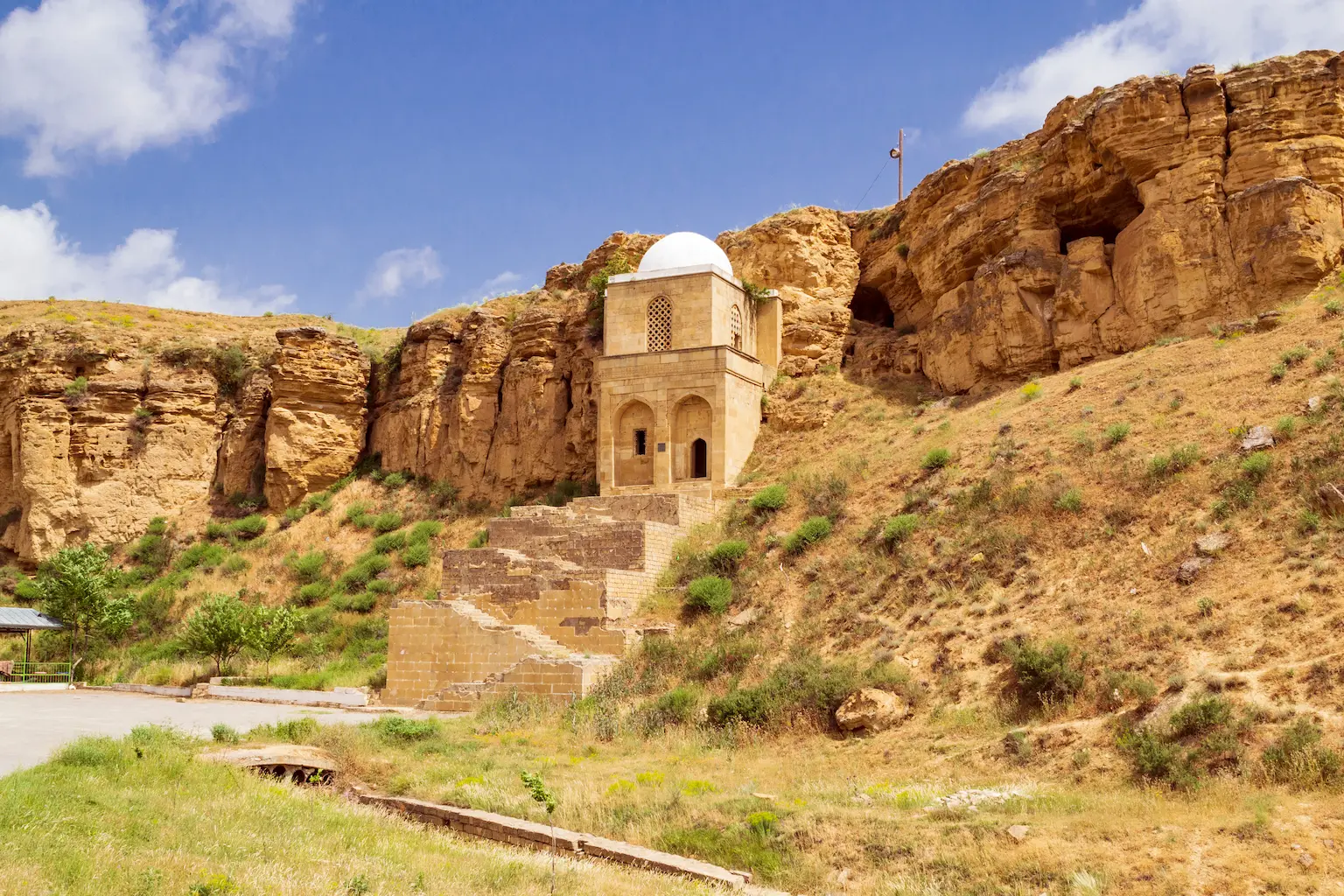
This information's unveiled in the decorated inscription strip that separates the building's floors.
So says the fragment of a ligature:
It’s built in the year 805 of the Hegira calendar (1402 AD) at the behest of the Shirvanshah Sheikh Ibrahim.
Also, a part of the architect's name - “…the son of Ustad Haji” - is inscribed on one part of the squinch.
Beyond that name and date, unfortunately, there’s no other physical evidence, not counting some travelers' diaries, such as that of Dutch traveler Cornelis de Bruijn.
The 2nd closest date after that is in the 17th century when certain special officers of the Russian Empire visited to confirm some facts about the shrine-tomb.
Origin of the Name "Diri Baba"
Also, the side of the Mausoleum that has been puzzling until now is related to how it got named.
Truly, where does the name of this tomb, called “Diri Baba Turbesi” in Azerbaijani and approximately 600 years old, come from?
Taking into account the etymology and the literal translation of the word, "Diri Baba" in basic Azerbaijani means "Living Grandfather" or "Alive Father".
It’s also noteworthy that the Azerbaijani people address sacred people with the word "Baba".
Apart from this monument, there’re many tombs with the ending "Baba" too.
Like "Soltan Baba" in Shabran (formerly Davachi) or "Şıx Baba" in Gabala.
These people were the holy men of their time, loved and revered by the masses. Like saints.
Coming back to the topic, there’re generally 2 versions of who this man, popularly known as Diri Baba, really was.
One of the stories mentions that the name of the person named Diri Baba was Pir Muhammed.
And he died while praying.
It is claimed that his body did not decay for over 300 years, which is why this tomb is called "Diri Baba".
Yet another tale is that this man was a man known as Atam ibn Amir.
According to this hypothesis, Ibn Amir died in seclusion here and was buried here.
Then, it became a sacred place for the locals of nearby settlements.
Mind-Blowing Architecture of the Diri Baba Mausoleum
The mausoleum of Diri Baba is a two-storeyed building with a dome and is unique from other structures in its peculiar appearance and architecture.
And the merging of the Diri Baba Mausoleum into natural rock recalls ancient Petra in Jordan and Naqsh-e Rostam in Iran rock-cut tombs.
In fact, the domed hall of the monument is on the same level with the palace complex of the decorative works of the Shirvanshahs.
That's why, from the architectural style perspective, it’d not be wrong to state that it resembles the magnificent buildings constructed in Baku in the 15th century.
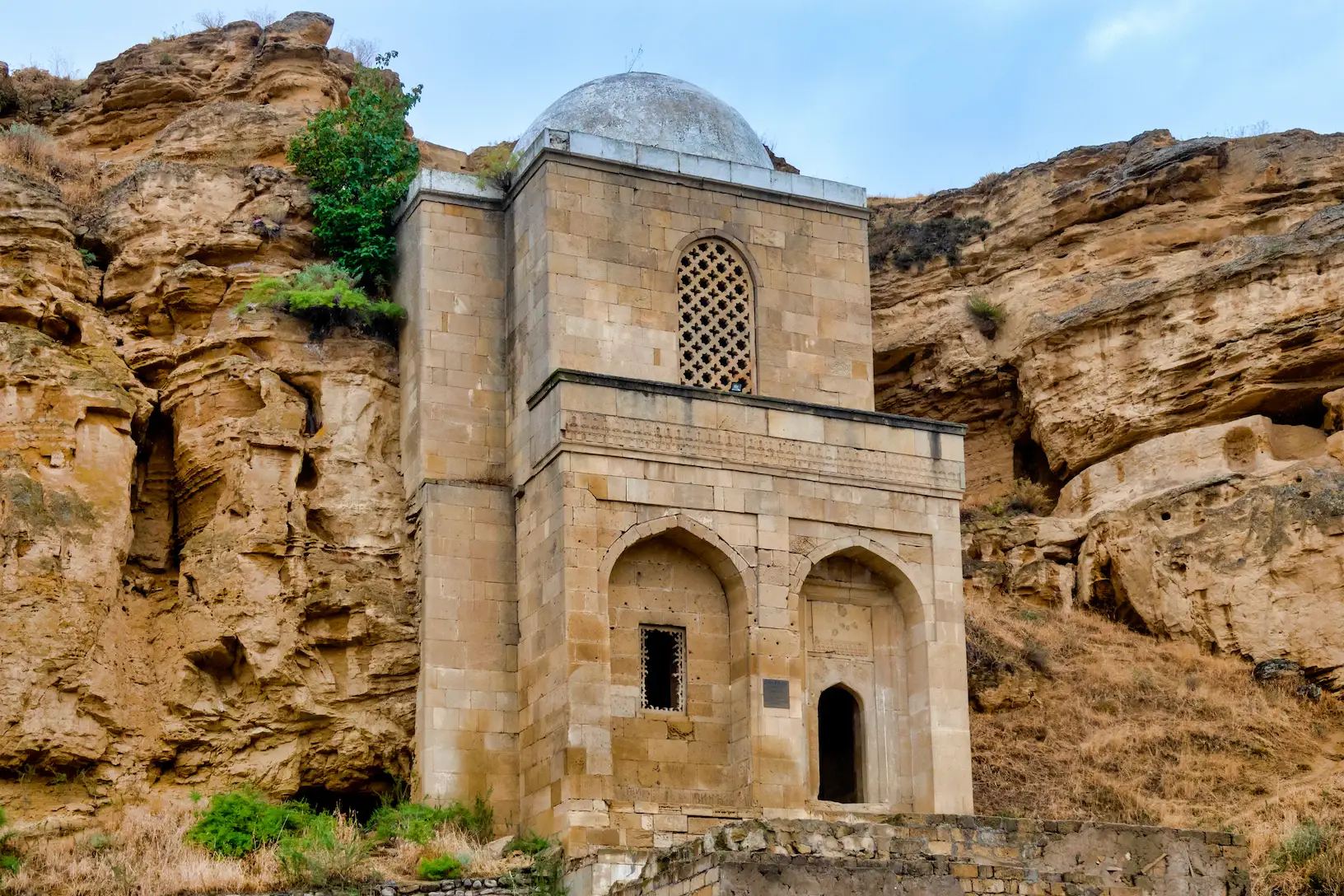
Inside, there is a high and thin stone staircase leading to the floors.
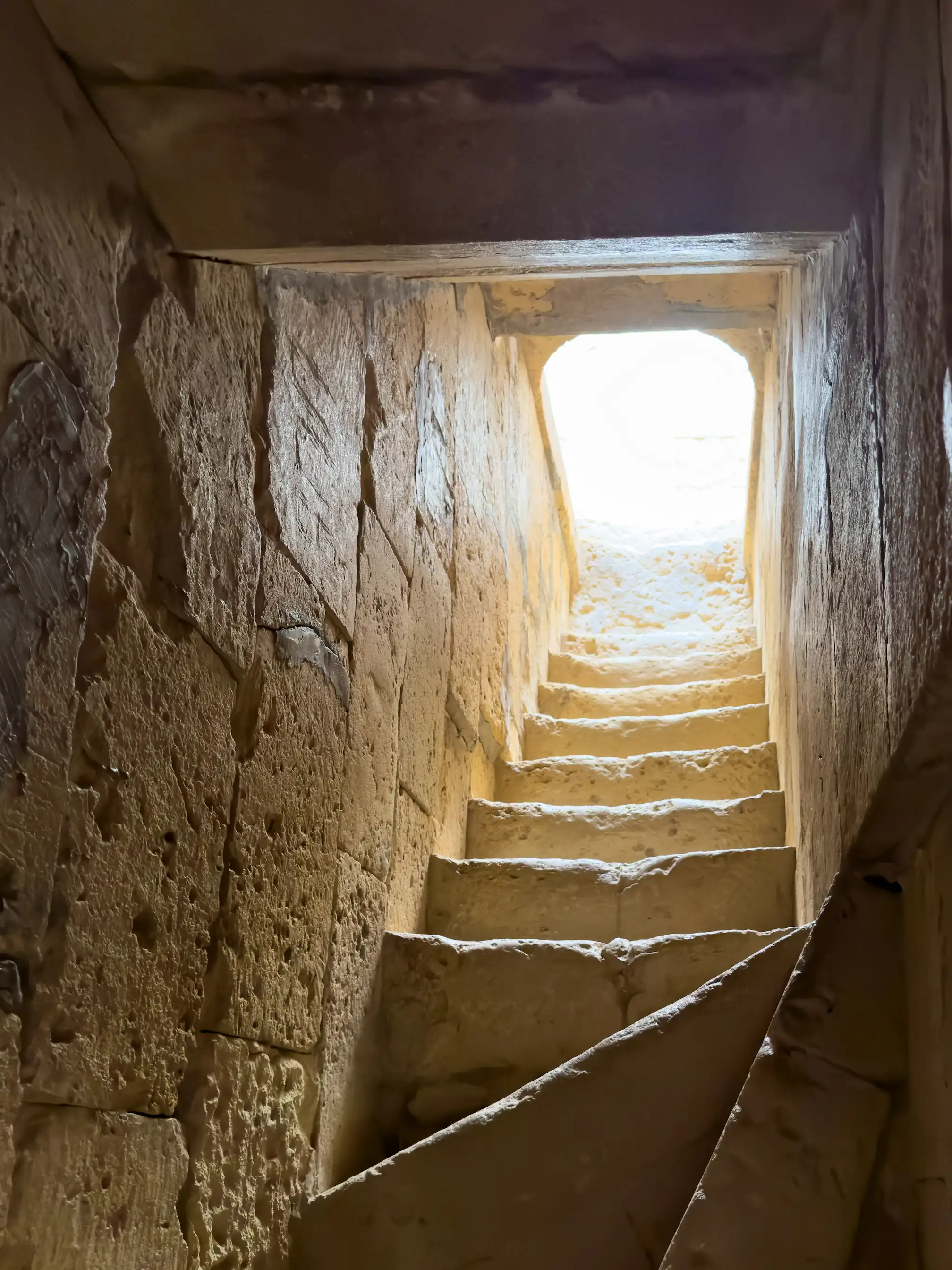
On the ground floor, there are 2 rooms with double arched windows and doors, and the ceiling is wooden.
The left room contains a window.
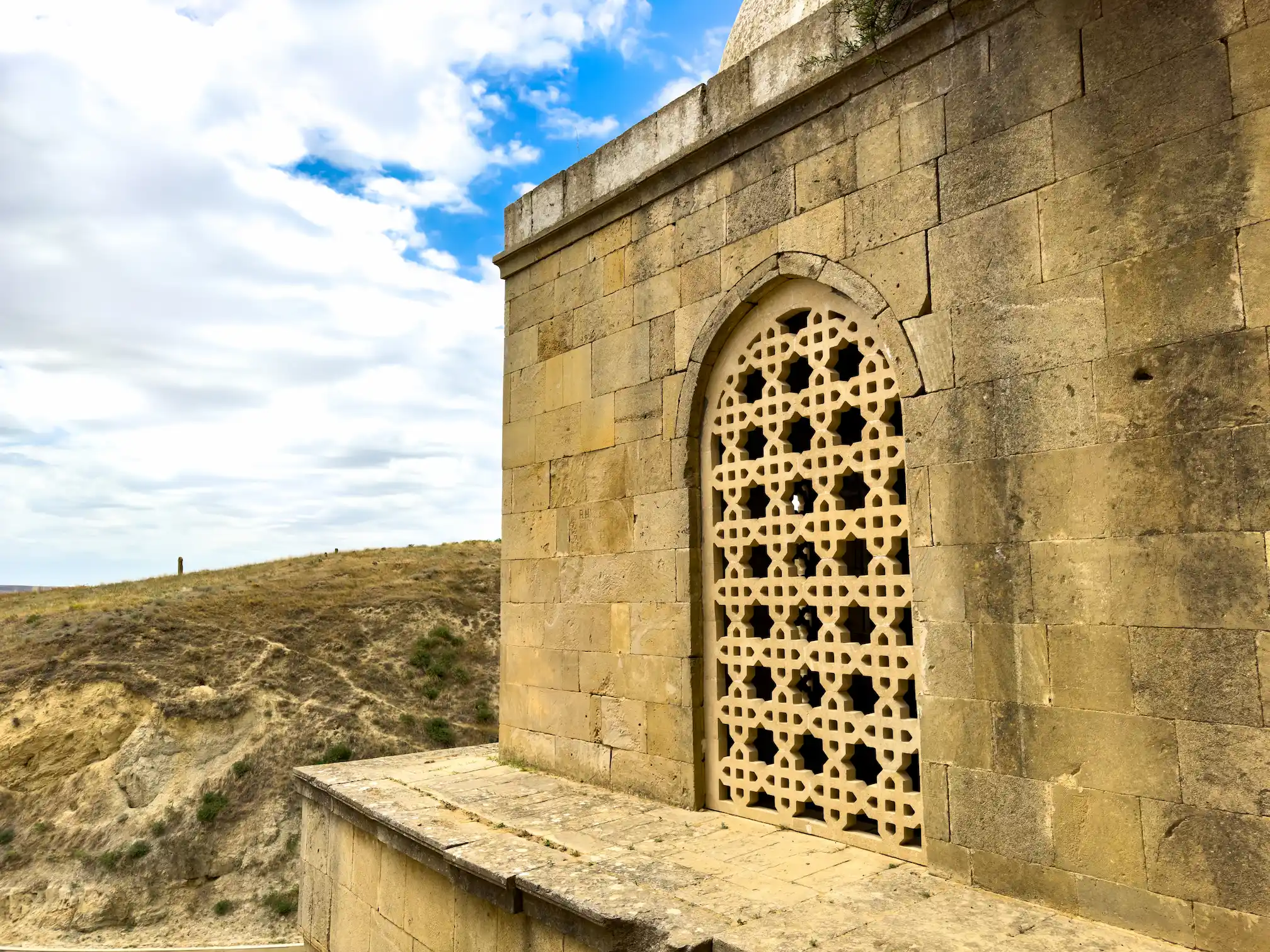
Conversely, the little square in the right room has an octagonal cupola.
On the second floor is the main part of the structure.
This room is about the same size as the 2 below.
It's a large quadrate hall, and the principal cave, in which the cell of “Diri Baba” is also located, is there.
In the meantime, corner pillars supporting the cupola are decorated with carved flower motifs on stone.
It also has openings that open towards the facade, and windows-like openings opening to the east and west to provide light to the room.
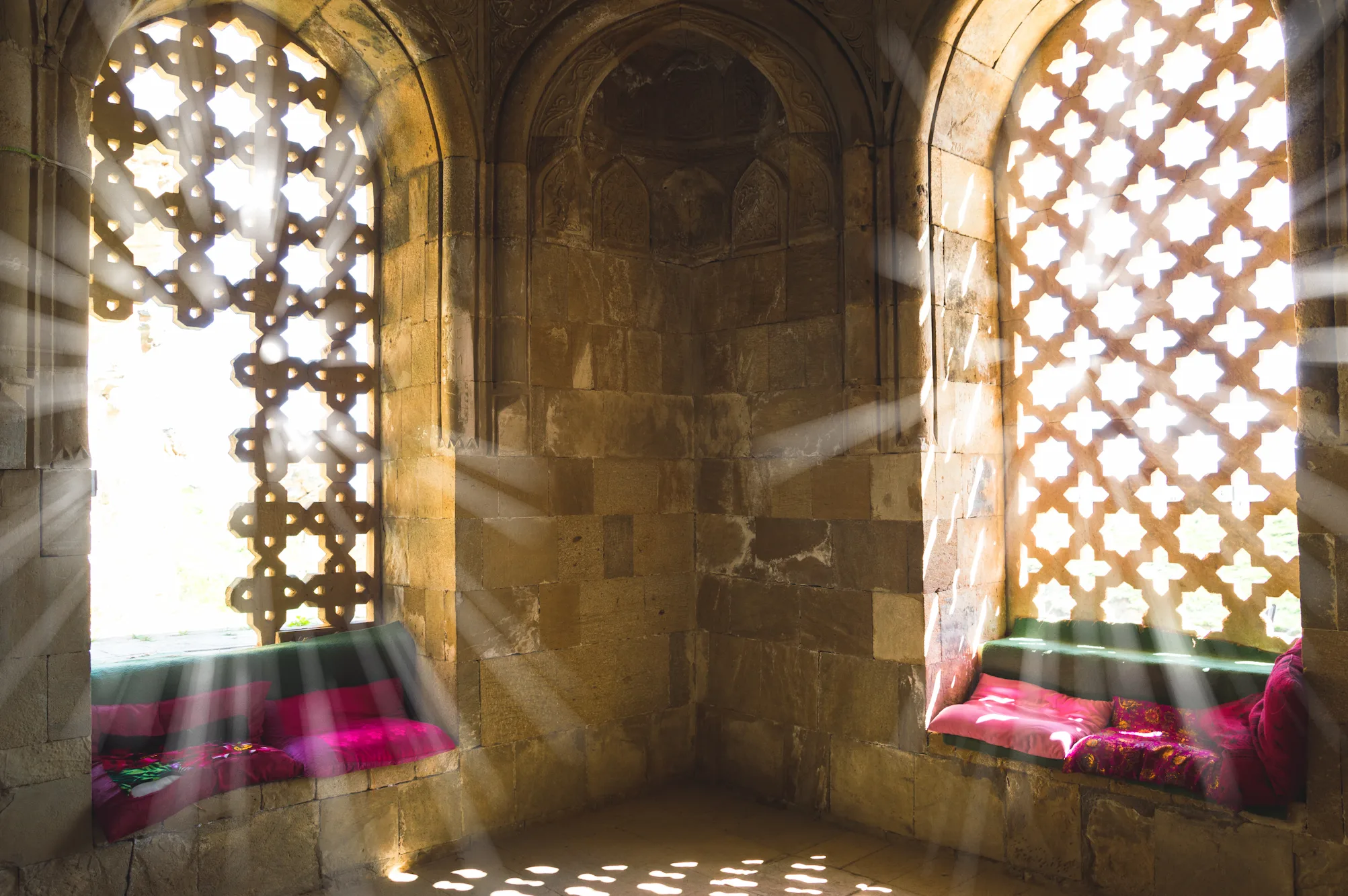
Heart of the matter is that it’s believed that the tomb of "Diri Baba" is in this cell.
Useful Tips for Visiting Diri Baba Tomb
No need to say, the Mausoleum of Diri Baba is worth visiting, particularly while going from Baku to Shamakhi.
Additionally, if you want to hit two birds with one stone in your itinerary, it's approximately 35 km (21 miles) from the Juma Mosque Shamakhi.
It can be crowded at certain times of the day, especially if you plan to visit in the afternoon.
That’s why, I recommend that you go in the morning.
This way (without too many people), you will be peaceful and serene, as if you were alone.
If you're a foreigner, you need to have a ticket to get in. The entrance fees to the mausoleum are 3-10 AZN.
Lastly, you'll also see 7 caves near the monument and an old cemetery on the opposite side.
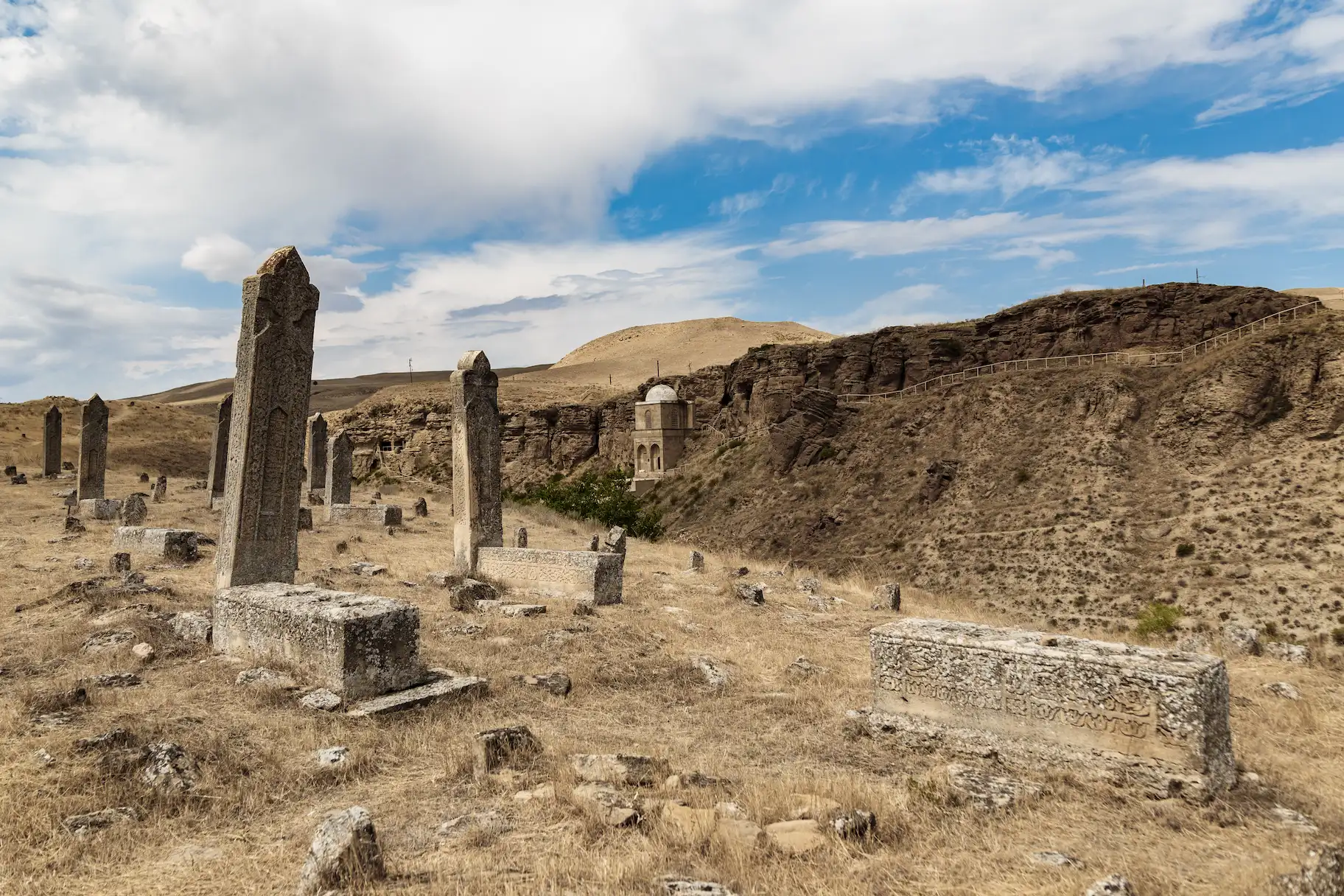
Have a great trip!
Need help planning your Azerbaijan adventure? Then reach out to us at this number » +994 992 72 22 27.
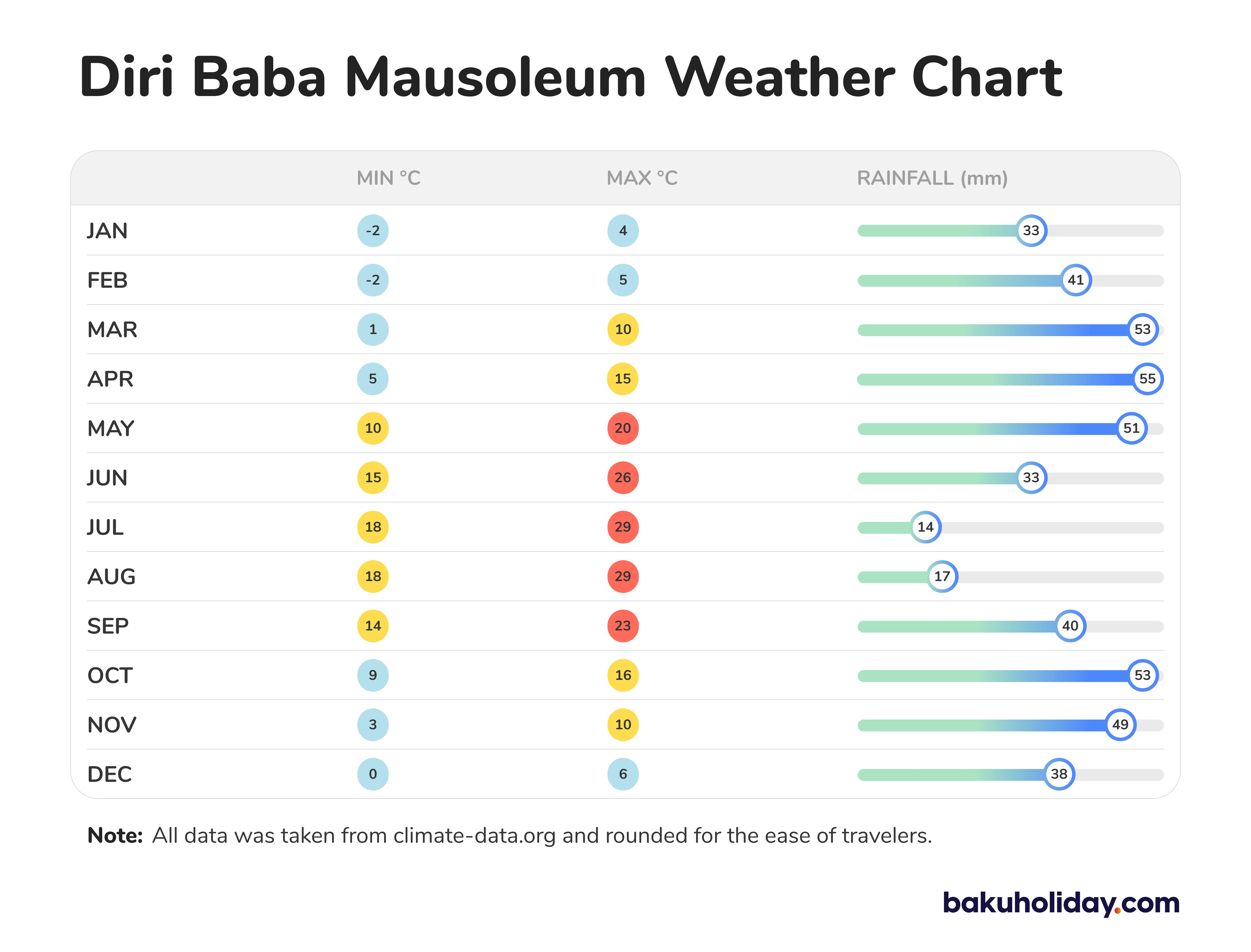




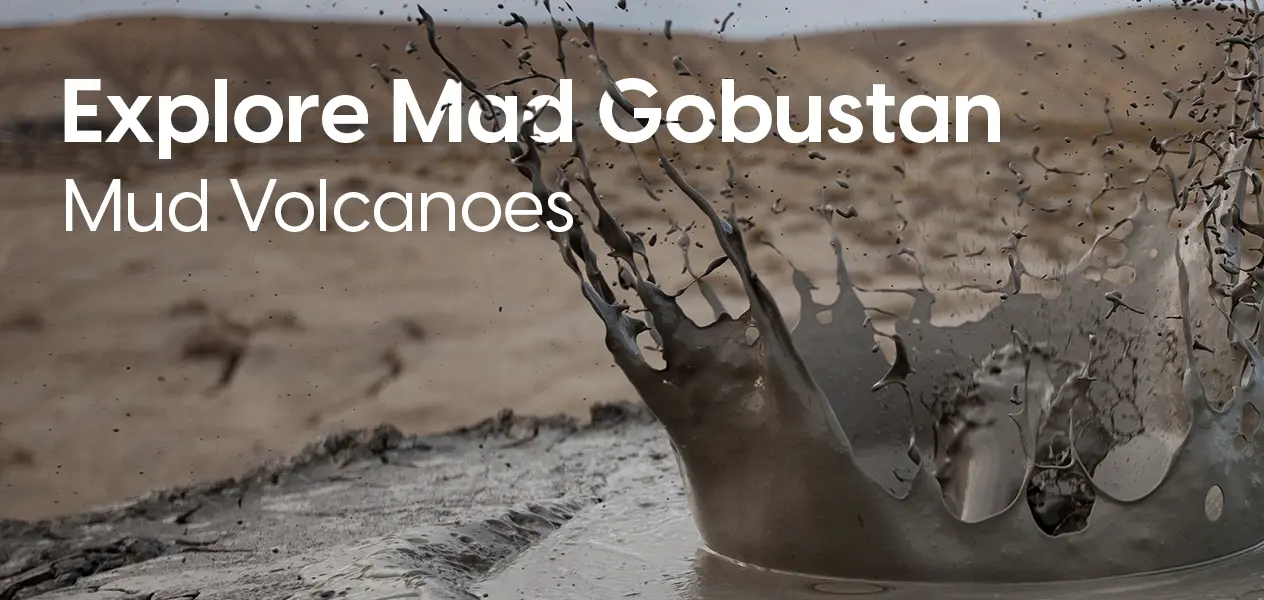
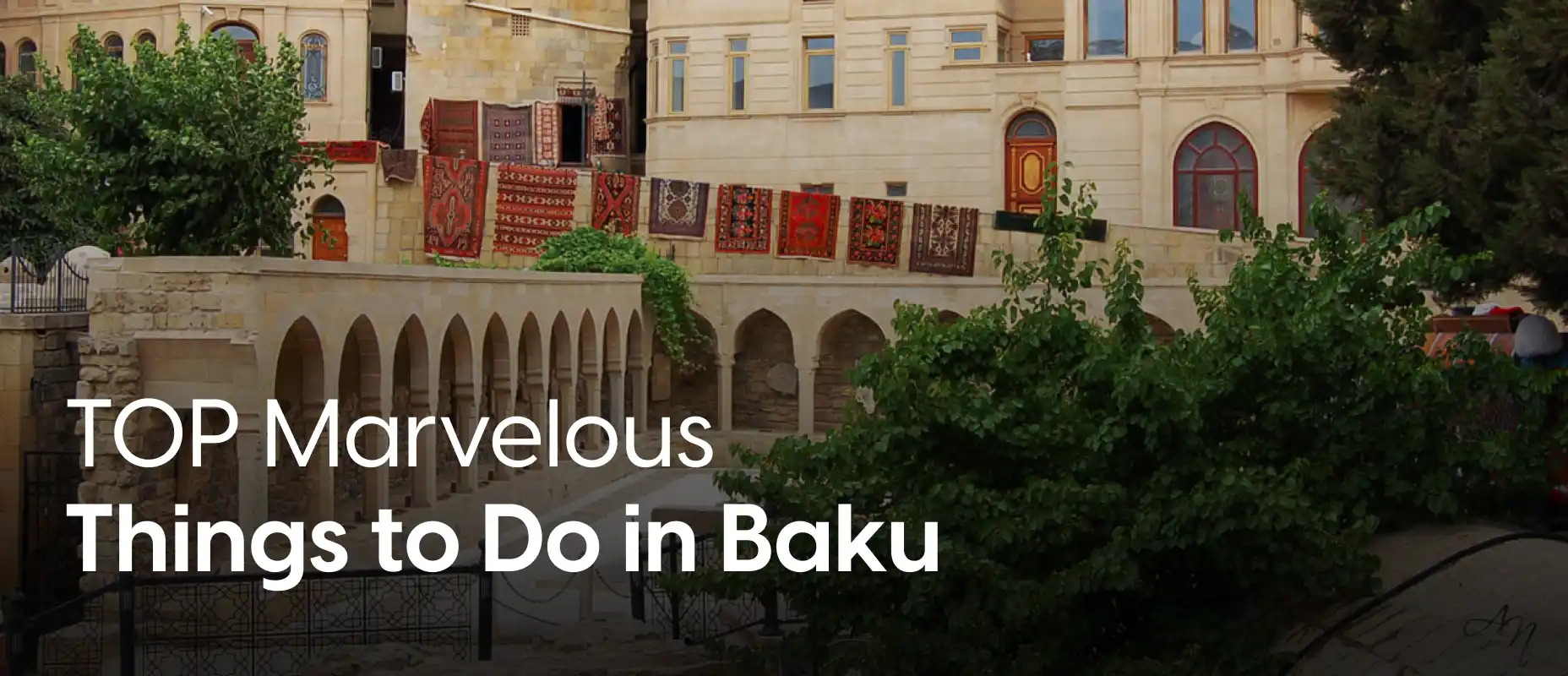
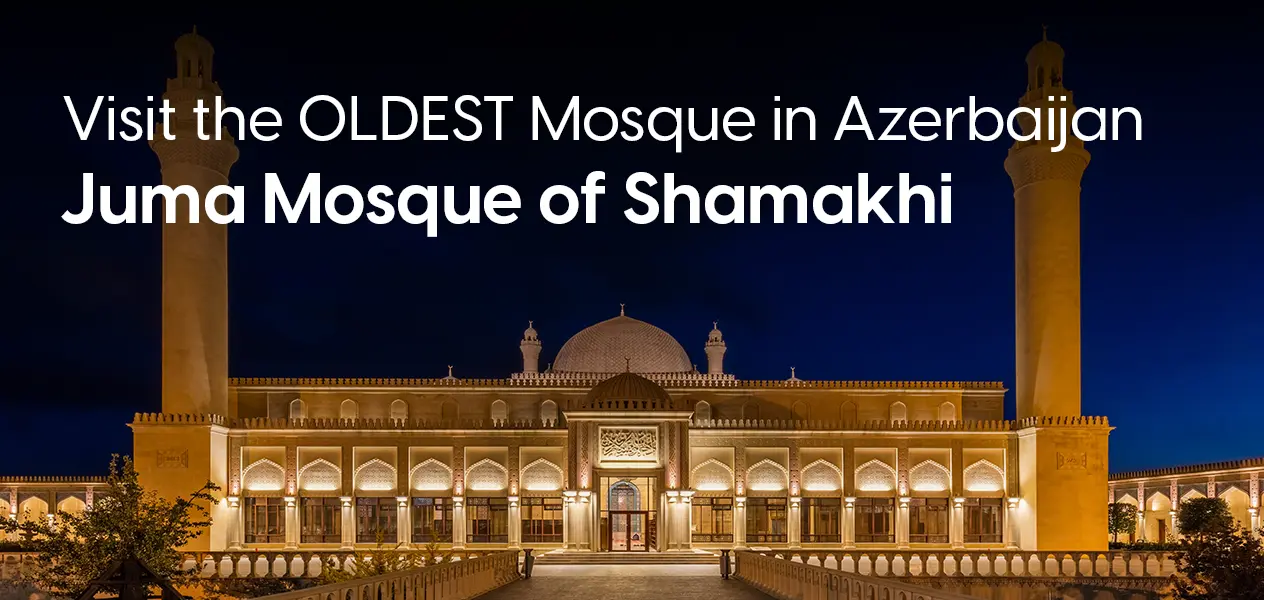
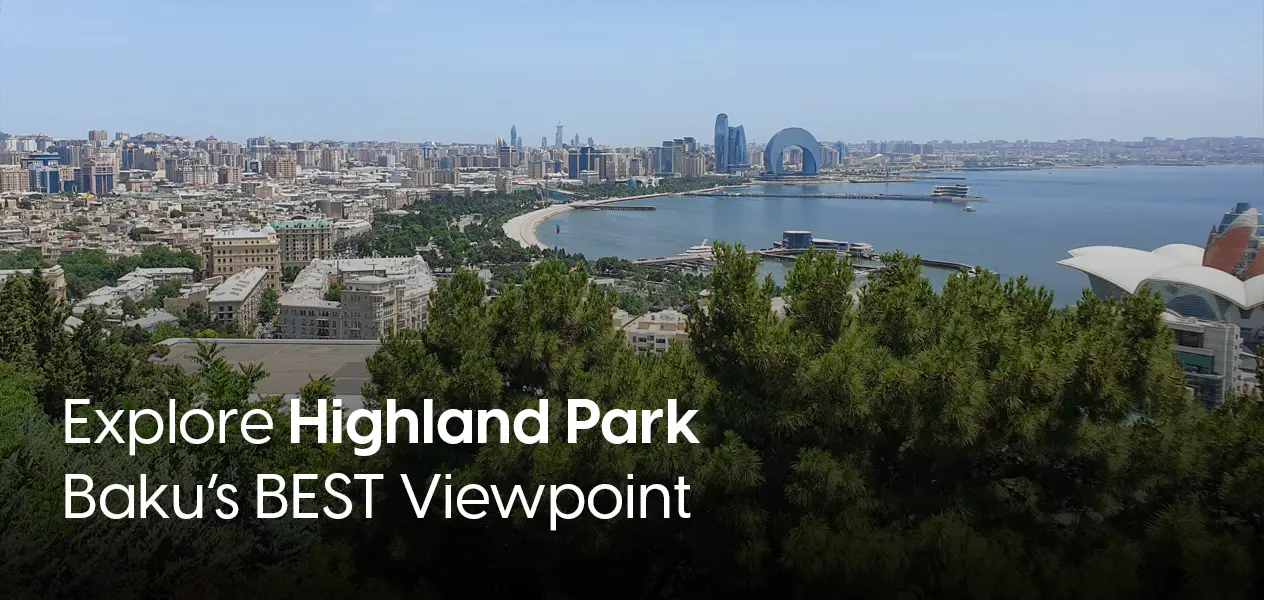


Leave a Comment